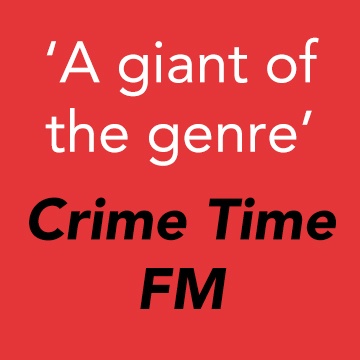A jambalaya of factors go into your enjoyment of a crime novel, and this one is definitely a flavourful mix. Author O’Neil De Noux has selected a time and place ripe for drama. New Orleans is consistently intriguing on many levels, most particularly for its diversity of strong cultures stewing together in the oppressive Louisiana heat. The time period, the turn of the last century, is filled with dramatic possibility, because of the city’s changing demographics and because of the real-life occurrence of the Robert Charles race riots, which De Noux draws into his story.
The challenges to New Orleans Police Detective Jacques Dugas begin when a four-year-old boy is kidnapped from the city’s Vieux Carré, at this point in its history an Italian and Sicilian district. Mostly recent immigrants, the residents have little use for the police and cooperation is scant, even when Dugas has the volunteer translating assistance of glamorous young Evelyn Dominici – the Italian-speaking daughter of a Corsican jeweler and an English lady. The Corsican is a New Orleans resident, but Lady Evelyn’s mother lives in England, ensconced in a drafty castle with her lover.
Dugas and his translator, rapidly falling for each other and flirting outrageously, pursue the many potential leads in the case until the investigation is derailed by the riots. Robert Charles (in the novel and in real life) shot dead two policemen, and the ensuing violence by both blacks and whites resulted in numerous deaths until and after Charles himself was killed. The book is populated with white supremacists, Italian citizens committees, Sicilian mafia, Irish cops and, always at the fringes, the blacks and the poor. Jambalaya.
You’ll really begin to appreciate cell phones, when you see how haltingly investigations proceed when a detective must cross town, ask a few questions, go back to HQ, and so on. De Noux is detailed in the back-and-forth of police efforts to find the boy and the mysterious agents behind his kidnapping. One delicious aspect of the book is how often Dugas, Evelyn Dominici, and their colleagues must stop to eat. Reading this book is enough to make the reader put on five pounds by literary osmosis. And I appreciate the short glossary at the back of the book that includes definitions for a number of New Orleans culinary and cultural references.
Yet all is not well-served in this self-published literary endeavour. De Noux attempts to absolve himself from any errors via a note saying, “If you found a typo or two in the book, please don’t hold it against us. We are a small group of volunteers…” There are more than a few typos. They run from spelling mistakes to grammatical errors to homonym confusion to extra words to missed words, sentences, paragraphs, and pages reproduced in gray, not black, type. The writer’s role, as John Gardner had it, is to create a fictional dream in which writer and reader are co-conspirators. Keep the dream going, and the reader continues to believe in the story created. Typos wake you up.
These sorts of problems are more than a cosmetic failure. Such lack of attention cannot help but make you wonder about the care expended on plot, characterisation, and other literary matters. In this book, the plot raced hither and yon so often that I occasionally lost the thread, and it left several loose ends. The character of Evelyn was, to me, unbelievable in her liberated attitudes for a woman of that era and an English noble, no less. Nor was the attention devoted to the attractiveness of her figure interesting on a sustained basis. Quite a few police personnel are brought into the story – too many to keep track of, at least without more care to make them into individuals. These issues are surprising from an author who’s won awards in the past.
Different readers have different levels of tolerance for these kinds of problems, of course, and I confess mine is rather low. Nevertheless, I actually enjoyed this book on its own terms, as a window into a pivotal time in one of America’s most fascinating cities. It’s a light summer read, and perfect for the beach.
For more historical crime set in New Orleans, try The Axeman’s Jazz by Ray Celestin.
Big Kiss Productions
Print/Kindle/iBook
£3.22
CFL Rating: 2 Stars











